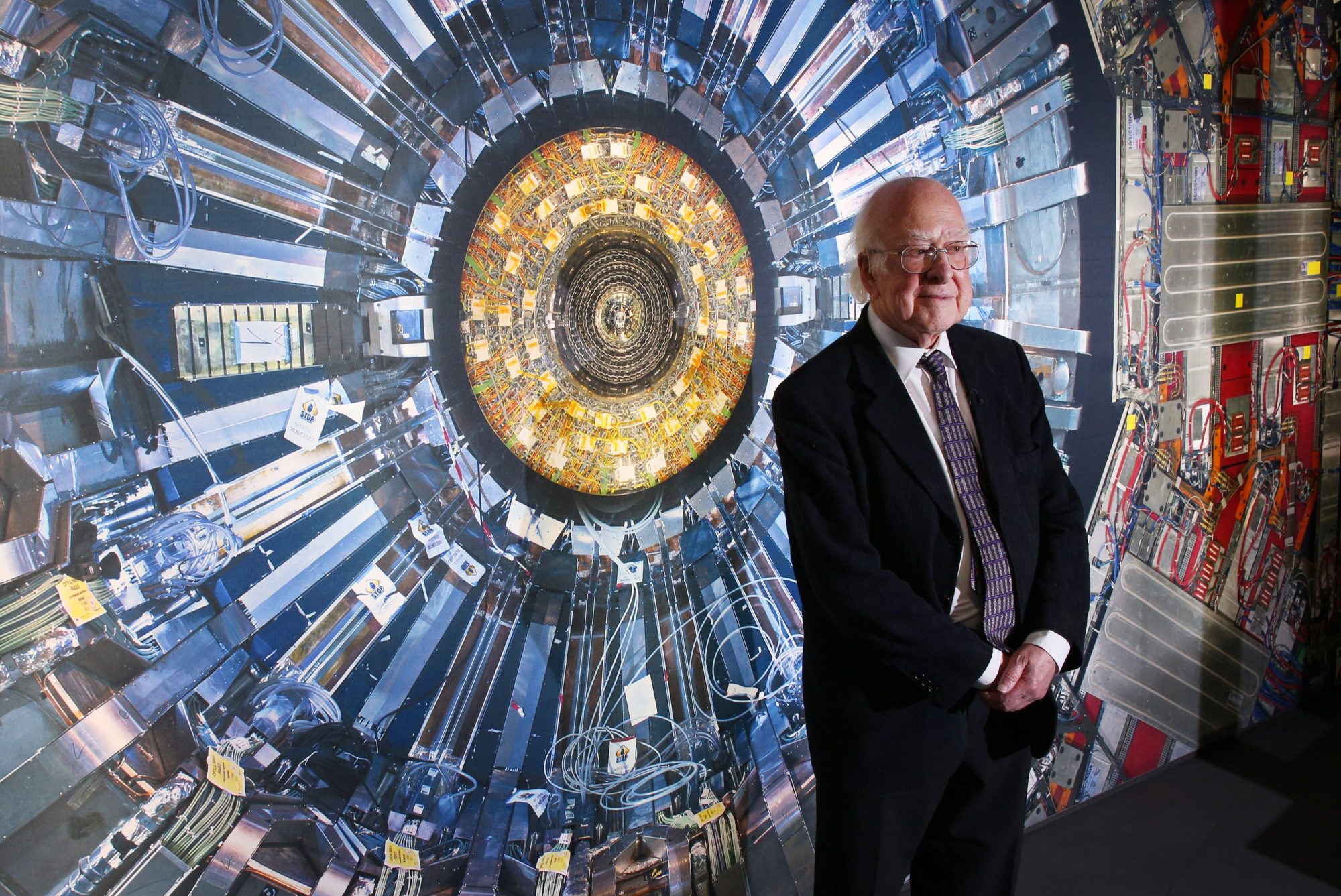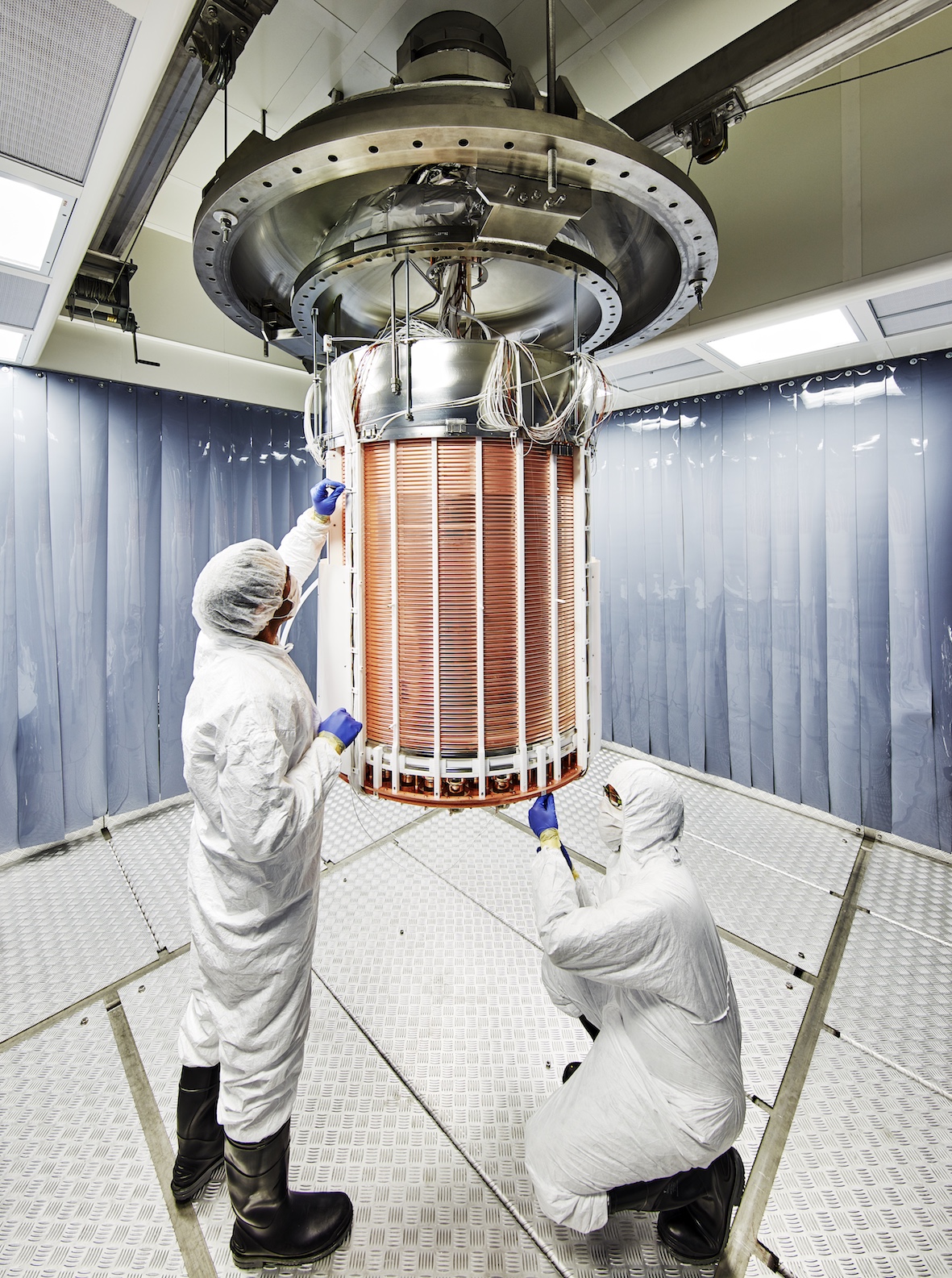The sub-atomic physics that I was taught in high school was pretty simple. Atoms were made up of Neutrons, Protons and Electrons. The Neutrons and Protons stayed in the atom’s nucleus, and are given the name nucleons for that reason while the Electrons orbited around the nucleus. We also learned that the Protons had a positive charge, the Electrons a negative charge while the Neutrons were electrically neutral.

That was about all you’d learn in class, if you wanted to learn any more you’d have to do outside reading on your own, of which I did plenty. It was from books like George Gamow’s “Thirty Years that shook Physics” that I learned about other particles like the neutrino, muon, pion, Lepton and Delta particles. (Although the science may be rather outdated, I still highly recommend Gamow’s book as a history of Quantum Mechanics!!!) Oh, and I also learned that every one of those particles had an anti-particle, identical in every way to its partner except having the opposite electrical charge.

But even as I was attending high school physicists were digging deeper. In fact it was in 1964 that physicist Murray Gell-Mann proposed the quark theory of nucleons. Gell-Mann’s idea was that the Proton and Neutron were composed of three smaller particles called quarks, two up quarks and a down quark made a proton while a neutron was two downs and an up. At the same time the lambda and delta particles were also composed of three quarks but for these unusual particles one of the quarks was a strange quark, a name given to the particle to indicate how little physicists understood it at the time. In Gell-Mann’s theory the pion was also composed of quarks but they were made of a quark anti-quark pair. Meanwhile the electron, muon and neutrino were not made of quarks, they remained elementary, fundamental particles that cannot be decomposed into smaller pieces.

It took physicists more than 20 years to work out the ramifications of Gell-Mann’s theory but by the early 1990s they had a framework called ‘The Standard Model’ that was able to broadly describe the interactions between the particles that they saw in their high energy ‘atom smasher’ experiments. The final piece in the standard model was the discovery in 2012 of the Higgs boson, the particle that gives all other particles their mass.

The standard model doesn’t answer all our questions however. For example while the Higgs boson does give other particles their mass we don’t understand why those particles have the mass they do. The up and down quarks have roughly the same mass, about 5 times that of an electron but other quarks have much larger masses. At the same time we know that the neutrino also has a mass but one that is so small that we haven’t been able to measure it accurately yet, it’s less than one millionth that of the electron. What sets all of the masses for these different particles, we just don’t know?

One of the problems not addressed by the standard model is that according to theory the neutron should possess a strong electric dipole, it should act like a strong positive and strong negative charges brought close together, a property that would be easily discovered. In order to solve this dilemma, known as the strong CP problem (for Charge Conjugation / Parity) in 1977 the physicists Roberto Peccei, Helen Quinn, Frank Wilczek and Steven Weinberg proposed a new particle called the axion. This new particle would have a very low mass, like the neutrino on the order of one millionth that of an electron, and hardly interact with other types of particles.

Even while particle physicists were trying to make sense of the concept of the axion astrophysicists and cosmologists heard about the particle and realized that the axion, if it existed, could be a major component of Dark Matter. With its low mass the axion would have been created in enormous numbers during the original Big Bang, and since they hardly interact with other particles they would still exist. Could the axion be the dark matter that the astrophysicists were searching for?
Now predicting new particles is a risky business. If you’re right you’ll become famous like Wolfgang Pauli with the neutrino or Robert Higgs and his boson. On the other hand there are dozens of ‘predicted particles’ that have never been found. And it often takes decades for experimentalists to develop the technology needed to prove that a particle exists. Pauli predicted the neutrino in 1930 and it wasn’t proven to exist until 1956. Same for the Higgs boson, Robert Higgs wrote his original paper in 1964 but the particle was only officially discovered in 2012.
That discovery is what researchers at the Gran Sasso National Labouratory in Italy hope to accomplish with their XENON1T experiment. The experiment consists of a 3.2 metric ton tank of Xenon gas in what is known as a Time Projection Chamber. Photomultiplier tubes inside the tank detect the tiny flashes of light produced by the interactions and the entire apparatus was constructed deep within a mine beneath the Gran Sasso Mountain in order to shield the experiment from false signals due to cosmic rays.

After two years of operation the XENON1T team has now announced the first ever measured evidence for the existence of axions. At a news conference on June the 17th the XENON1T physicists presented their data showing an excess number of flashes in the low energy region. This was exactly the sort of signal that would be expected for interactions with axions produced in the interior of the Sun. According to the announcement the amount of data collected was sufficient for a 3.5 sigma confidence level in the discovery.

That 3.5-sigma level is the problem; statistically 3.5-sigma means that there is only a one in 10,000 chance that the excess flashes are simply a matter of luck. Like rolling a pair of dice and getting boxcars three times in a row, something that only happens very rarely, but it does happen. The physics community has agreed that in order to really announce a ‘Discovery’ an experiment must achieve a confidence level of 5-sigma, which means that there is only one chance in 3.5 million that the data is just a statistical fluke.

So what do experimental physicists do when their experiment looks like it’s found something but the data is too small to be certain? Build a bigger, more sensitive experiment of course. The scientists at XENON1T are already doing just that, upgrading their equipment to an 8 metric ton container of Xenon for a new 5-year run that should be able to cross the magic 5-sigma threshold.
So has the axion been found? Well some other physicists are already criticizing the whole setup; the same signal could be produced by the detector being contaminated by the isotope of hydrogen called tritium. It takes time to be certain so we’re all just going to have to wait. Making a discovery is what every scientist dreams of but as they all know, it’s more important to be right than to be first!
